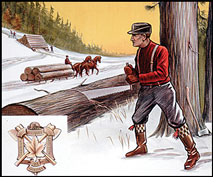Crossref Citations
This article has been cited by the following publications. This list is generated based on data provided by
Crossref.
Hartl, Claudia
St. George, Scott
Konter, Oliver
Harr, Lorenz
Scholz, Denis
Kirchhefer, Andreas
and
Esper, Jan
2019.
Warfare dendrochronology: Trees witness the deployment of the German battleship Tirpitz in Norway.
Anthropocene,
Vol. 27,
Issue. ,
p.
100212.
Gheyle, Wouter
Stichelbaut, Birger
and
Verdegem, Simon
2021.
Visser, R. M.
2021.
On the similarity of tree‐ring patterns: Assessing the influence of semi‐synchronous growth changes on the Gleichläufigkeitskoeffizient for big tree‐ring data sets.
Archaeometry,
Vol. 63,
Issue. 1,
p.
204.
Haneca, Kristof
Deforce, Koen
van der Laan, Jelte
Nicolaij, Stephan
and
Lange, Silke
2022.
WOODAN: an online database of archaeological wooden objects.
Vegetation History and Archaeobotany,
Vol. 31,
Issue. 5,
p.
541.
Gheyle, Wouter
Bourgeois, Jean
Note, Nicolas
Saey, Timothy
Van Eetvelde, Veerle
Van Meirvenne, Marc
and
Stichelbaut, Birger
2022.
‘Winter camp’ 1917: integrated conflict archaeology on the Messines Ridge 1914-1918 (Belgium).
Journal of Conflict Archaeology,
Vol. 17,
Issue. 2,
p.
66.
Verdegem, Simon
Debouck, Yelmer
Pieters, Marnix
Stichelbaut, Birger
Haneca, Kristof
and
Allemeersch, Luc
2023.
عامر عبد الزراق عبد الحسين
and
سامي صالح محمد
2023.
إدارة واستغلال الغابات في فرنسا خلال سنوات الحرب العالمية الاولى (1914-1918) .
مجلة آداب الفراهيدي,
Vol. 15,
Issue. 52,
p.
97.
Dewilde, Marc
Wyffels, Franky
and
Cousserier, Katrien
2023.
Lange, Silke
Van der Laan, Jelte
Nicolaij, Stephan
Haneca, Kristof
Deforce, Koen
Lombaert, Lien
Maes, Bert
Lupak, Ton
De Kreyger, Frederik
Timmerman, Raf
Cleeren, Natalie
Bourgeois, Ignace
Pelsmaeker, Sebastiaan
Van den Bulcke, Jan
and
De Clercq, Wim
2023.
Verhaeghe, Charlotte
Scheers, Ali Jelene
Desmet, Charlotte
Vanhoutte, Sofie
Ervynck, Anton
Pieters, Marnix
and
Moens, Jan
2023.
Jia, Hengfeng
Zheng, Jiacheng
Yang, Jing
Lyu, Lixin
Dong, Yuntao
and
Fang, Ouya
2024.
Tree-growth synchrony index, an effective indicator of historical climatic extremes.
Ecological Processes,
Vol. 13,
Issue. 1,
Jia, Hengfeng
Zheng, Jiacheng
Fang, Ouya
Yang, Jing
Langzhen, Jia-Yang
Hebda, Richard J.
and
Zhang, Qi-Bin
2024.
De-synchronization in tree growth is a strategy for maintaining forest resilience.
Agricultural and Forest Meteorology,
Vol. 359,
Issue. ,
p.
110292.
Segreto, Luciano
2024.
The Timber Economy in the Baltic Sea (1600–1939).
Vol. 18,
Issue. ,
p.
65.
van Daalen, Sjoerd
Borghaerts, Paul
and
Rao, Mukund Palat
2025.
Longleaf pine in the low countries.
Dendrochronologia,
Vol. 91,
Issue. ,
p.
126333.
